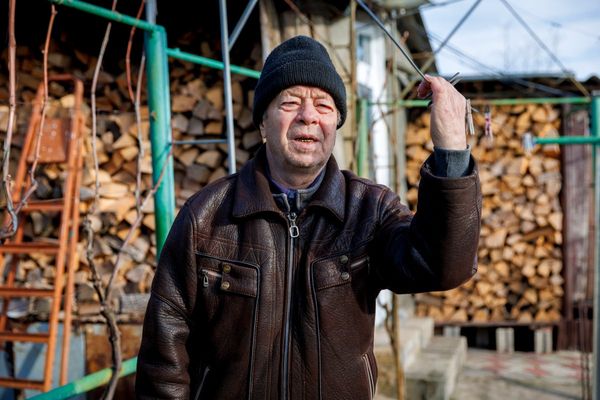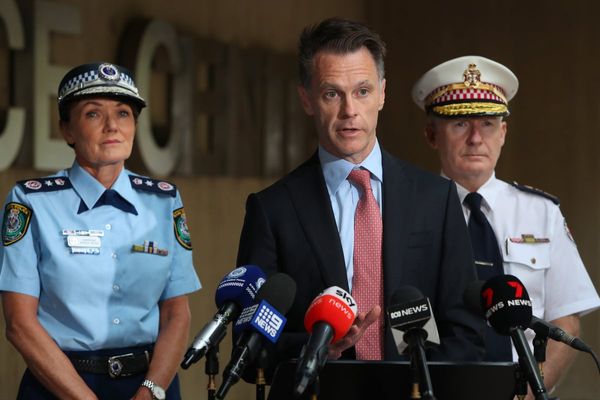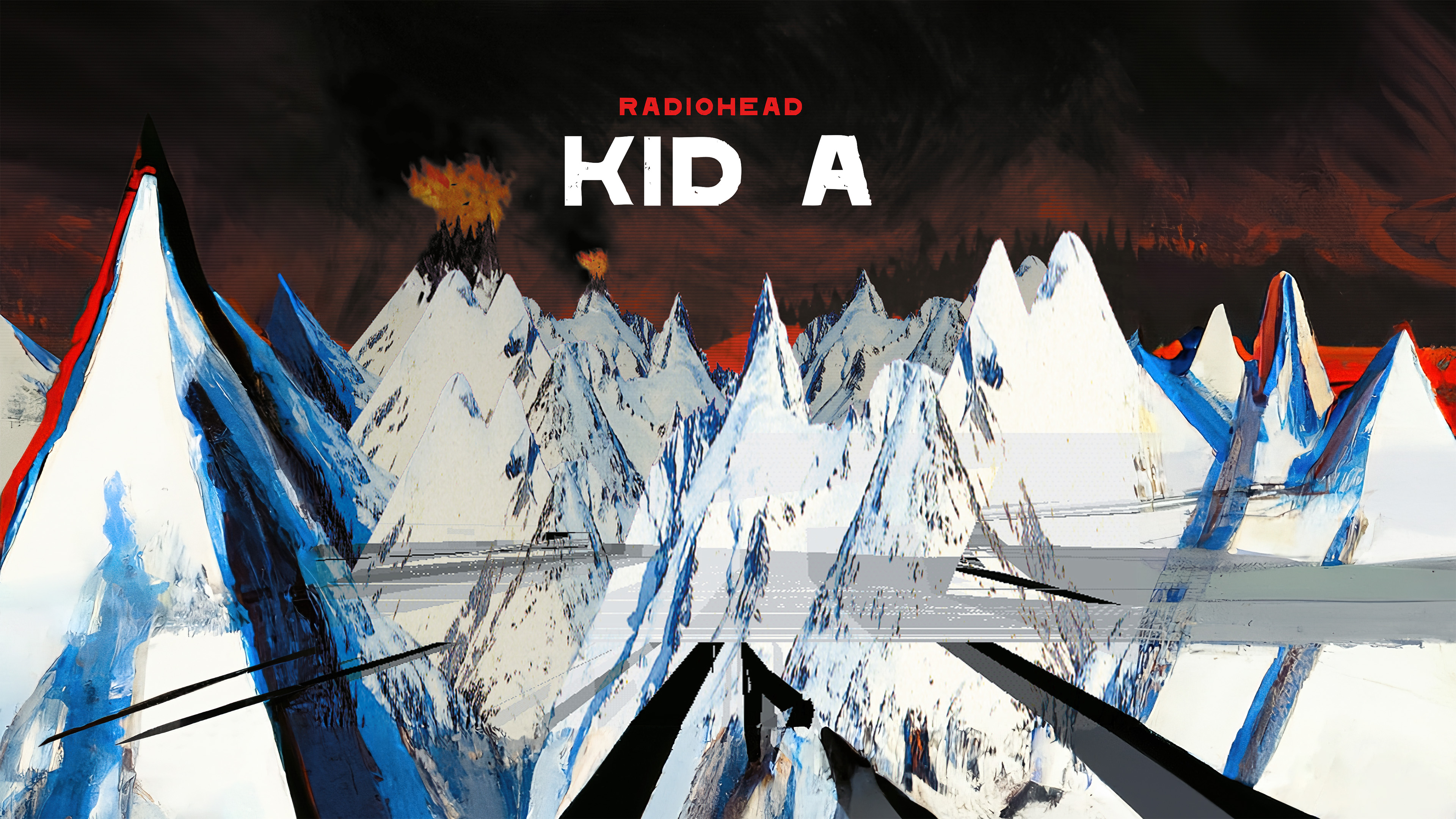
Very few bands in recent decades have inspired such reverence and respect as Radiohead. Over the course of nine studio albums, the Oxfordshire five-piece have built a reputation on breaking new creative ground, challenging preconceptions while forging music of real integrity and intent.
It’s not always been a smooth trajectory, a notion borne out by the release of their fourth album Kid A in 2000, a work that left many diehard fans feeling bewildered and bereft. After the critical and commercial success of OK Computer (1997) hopes had been high for the new album. Months before its release, Pat Blashill of Melody Maker echoed the thoughts of many when he wrote "If there's one band that promises to return rock to us, it's Radiohead."
It wasn’t to be. The album that emerged was light years away from rock. Gone were the guitar-driven baroque anthems, and the searing, visceral strains of Jonny Greenwood’s Telecaster. Instead, Kid A was a record defined by the sounds and textures of electronica, free jazz, and modular synths.
Just as Thom Yorke would reimagine his entire creative process, so too would Radiohead redefine the role of the guitar within their new sound. This is where guitarist Ed O’Brien emerged as an innovative source. His sound and technique would play a pivotal role in Radiohead’s bold new sonic journey.
I felt just as emotional about it as I'd ever felt about guitar music
By the time work began on Kid A in January 1999, Radiohead had been touring almost relentlessly for almost eight years and by their own admission, were burnt out. Thom Yorke had become ill, describing himself as “a complete fucking mess… completely unhinged”.
He was also suffering from writer’s block and unable to finish songs on the guitar. Yorke was completely disillusioned with rock music and began listening almost exclusively to the electronica artists signed to Warp Records, such as Aphex Twin and Autechre.
"It was refreshing because the music was all structures and had no human voices in it,” he told The Guardian in September 2000. “But I felt just as emotional about it as I'd ever felt about guitar music."
Yorke liked the idea of his voice being used as an instrument rather than having a leading role, and wanted to focus on sounds and textures instead of traditional songwriting. This was the direction that would inform Kid A.
Sessions began in January 1999 at Guillame Tell Studios in Paris, before the band moved in March to Medley Studios in Copenhagen for two unproductive weeks. In April, Radiohead began recording in a mansion in Batsford Park, Gloucestershire. The lack of deadline and the number of incomplete ideas made it hard to focus and the group held tense meetings. They agreed to disband if they could not create an album they all believed in.
In September 1999, the band relocated to their own newly-built studio in Oxfordshire in September 1999.
The producer they chose for the new album was Nigel Godrich, who had been at the helm of OK Computer. Yorke still only had fragments of songs, just sounds or rhythms, and no verses, choruses or lyrics to speak of. His plan was to record everything they played and then edit it, in the same way that Can had done in the late '60s and '70s at their studio in Cologne.
For the rest of the band, the challenge was finding their place in this new uncharted landscape. Bassist Colin Greenwood confessed to writer Nick Kent that he found the Warp influences “really cold”, while Ed O’Brien said: "It's scary – everyone feels insecure. I'm a guitarist and suddenly it's like, well, there are no guitars on this track, or no drums."
But Kid A would be the album that opened up a whole new vista for Ed O’Brien. While Jonny Greenwood, immersed himself in acquiring and learning the Ondes Martenot – an electronic instrument invented in 1928, which produces wavering sounds similar to a theremin – O’Brien experimented with guitar sounds that enhanced the band’s new sonic template.
O’Brien had traditionally played a support role to the stunning lead work of Jonny Greenwood and the riffs and rhythmic work of Yorke. But the ambient sounds and textures O’Brien created on guitar have been integral in giving the Radiohead sound its layers of complexity.
On The Bends and OK Computer, O’Brien had used an EBow, which was fundamental in creating long drone-like sustained notes. He also used a Boss DD-5 pedal, which he described as “key to the sound of The Bends and OK Computer ... It's the only delay that can make those OK Computer sounds.”
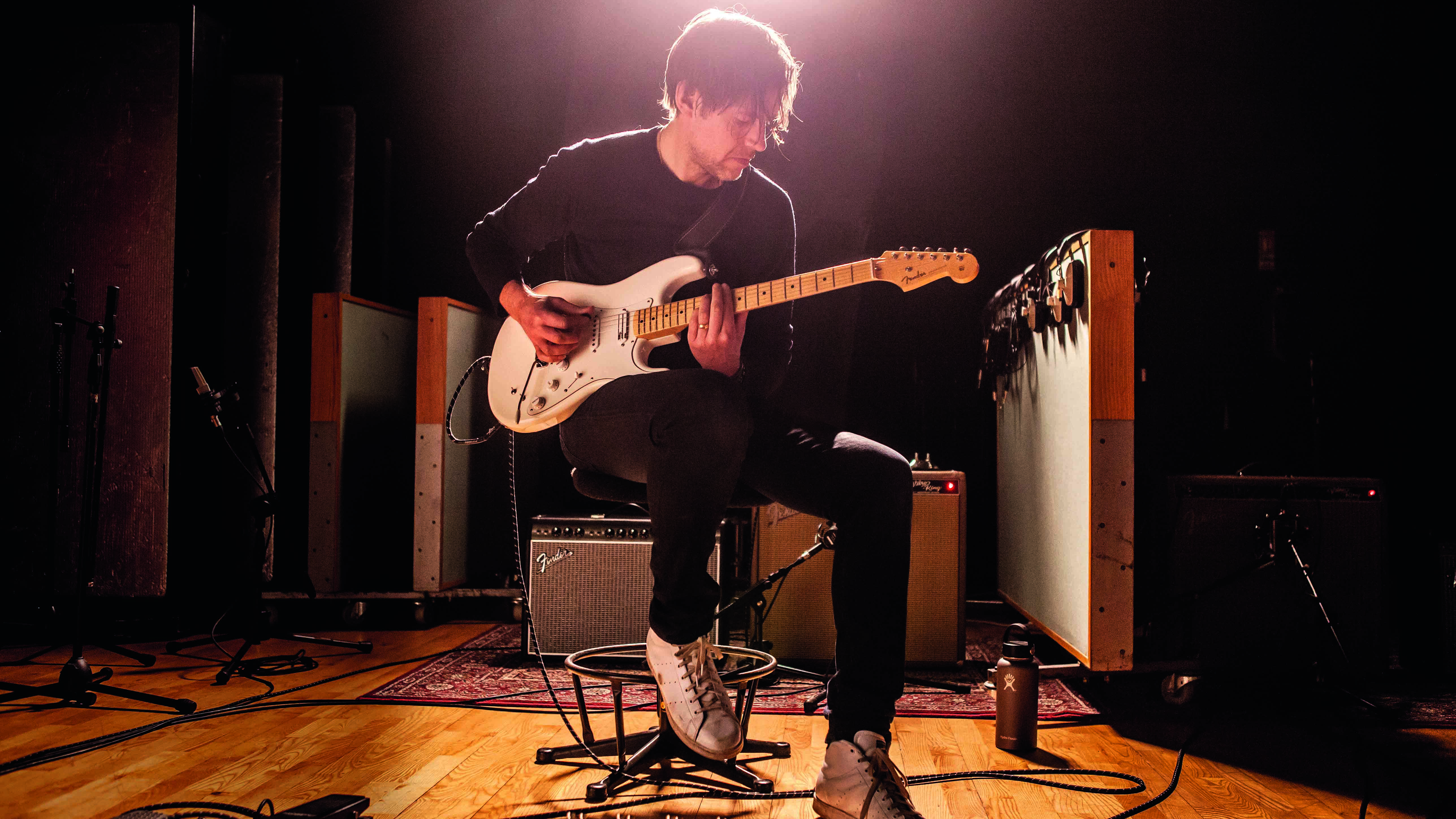
On Kid A, O’Brien took this sustain to a whole new level. O’Brien’s main guitar since 1996 had been an Eric Clapton Strat. In early 2000, he contacted Michael Brook, creator of the Infinite Guitar, who suggested that O’Brien should use sustain units and pickups on his guitar, to sustain notes indefinitely. “He directed me towards Fernandes, who had the Sustainer,” O’Brien told MusicRadar in 2017. “I had a Clapton Strat from the mid-’90s, and we put the Sustainer unit in there, and that’s when we started using it.”
O’Brien combined the Fernandes Sustainer with looping and delay effects to create synth-like sounds. It's these long drawn-out sounds that can be heard beneath the swells and structure of songs such as Kid A. The Fernandes Sustainer system would go on to become a defining onboard feature of O’Brien’s signature model EOB Stratocaster in 2017.
Towards the end of 1999 the band were starting to make progress. “Start working on a band loop called ‘fast track’,” wrote O’Brien in his online diary, on 6 October 1999. “Thom had a rough arrangement on Cubase last night. Nige and I then do some guitar sounds using my new toy – the first Roland guitar synth, which sounds pretty different.”
One day later, he was similarly upbeat: “Optimistic is possibly my favourite band song that is played together live in a room,” wrote O’Brien. “Sounds fucking great. We do about nine versions. In most there are some amazing moments. The penultimate take would seem to be the one.”
With its staggered propulsive beat, and strident jagged guitar, Optimistic is the rockiest track and the only guitar-based song on the album. It’s a three guitar onslaught from Greenwood, O’Brien and Yorke. When the band showcased the track in their set for the first time, in Dublin on 7 October 2000, Greenwood was playing a vintage Fender Starcaster through Vox AC30TB Dave Petersen Special amplifier, with a Roland RE-201 Space Echo and Boss SD1 overdrive pedal.
By the dawn of the new millennium, six songs had been completed, including How To Disappear Completely, created in January 2000. It’s a haunting, melancholic track with soaring strings, arranged by Greenwood. Jonny Greenwood described the track Everything In Its Right Place as the real turning point for the album. "We knew it had to be the first song, and everything just followed after it,” he said.
Although wholly invested in using synths, Cubase and Protools to write, Thom Yorke still contributed guitar, using the Lakewood M14 acoustic on How To Disappear Completely. On the Kid A album, Yorke also played his first true hollowbody electric guitar, a vintage Gibson ES-125.
When Radiohead played the track live for the first time in October 2000, O’Brien used his Rickenbacker 360 12-string run through effects such as a Crowther Hotcake, DigiTech Whammy WH4 pitch shifter and his Boss DD-5 delay.
The spooky, atmospheric ambient track Treefingers was created by processing guitar loops of O'Brien's random chords, while arpeggiated guitar lines and staccato notes pervade the dreamy imagery of In Limbo. The track features more syncopated, staccato guitar work from Jonny Greenwood, who is playing his late '70s Fender Starcaster with a Boss SD1 overdrive pedal and Roland RE201 Space Echo through his Vox AC30TB Dave Petersen Special amp. The band debuted the track on 13 June 2000 at the Theatre Antique in Arles, France.
It’s difficult to overstate just how profoundly different Kid A was to everything Radiohead had released at that point. It was a gargantuan shift. It was released on 2 October 2000 and was one of the most eagerly anticipated albums of its era but even the more usually insightful critics loathed it.
Alex Petridis of The Guardian described it as "self-consciously awkward and bloody-minded, the noise made by a band trying so hard to make a 'difficult' album that they felt it beneath them to write any songs".
Jim Irvin in Mojo concluded that "upon first listen, Kid A is just awful ... Too often it sounds like the fragments that they began the writing process with – a loop, a riff, a mumbled line of text, have been set in concrete and had other, lesser ideas piled on top."
Yorke recalled that the band were “white as a sheet” when it came to the prospect of playing the tracks from Kid A live. In June that year, Radiohead embarked on a tour of the Mediterranean, followed by some select dates across Europe, the UK, Ireland and the US. This was the first time that Radiohead used looping and live sampling on tour. This was made possible only by a host of performance-orientated samplers, such as the Korg Kaoss Pad, Line 6 DL4, and Akai Headrush looper pedal, all of which had been released only a year earlier in 1999.
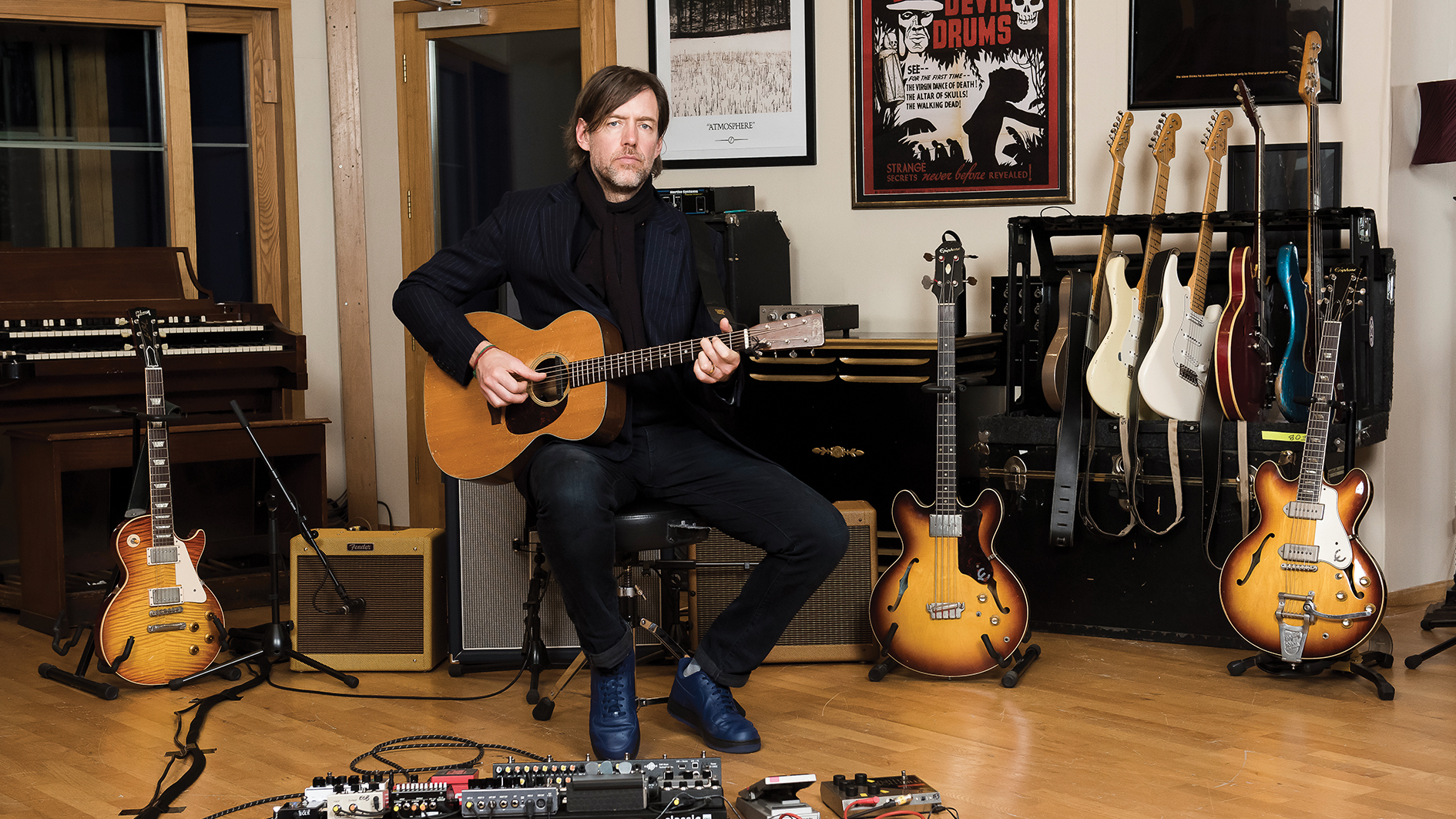
Radiohead’s Ed O’Brien: “I was always drawn to sounds that didn’t sound like the guitar
The 2000 tour was also the first time Ed O’Brien performed with a guitar modified to include a sustainer system. The heavily modified Eric Clapton Signature Stratocaster used for the Dublin show would become his go-to instrument for more than a decade and would become the inspiration for his Fender EOB Signature Stratocaster, launched in 2017.
As time went on, critics began to see greatness within the Kid A album, which reached No.1 on both sides of the Atlantic. “Get past the glitchiness and the occasional moments of discord,” wrote Phil Mongredien in The Guardian, “and here were songs as affecting and powerful as those on OK Computer, just framed somewhat differently.”
